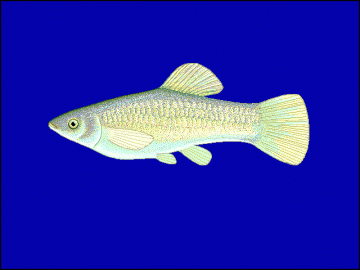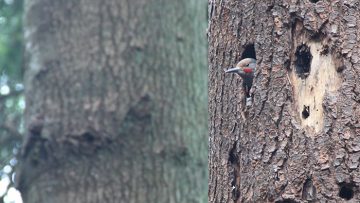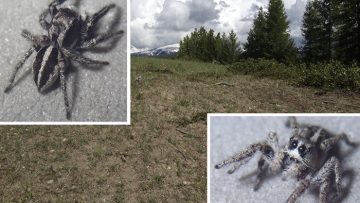American Bison: The Art Of Tending
Before I began researching the courtship behaviour of animals, I didn’t believe that following a female around was a viable way for a male to win her over, but it is and the American Bison is no exception.
The Amazon Molly: A Unisexual Species
Though their namesake, the Amazon warriors, did have males in their tribes, the Amazon Molly has figured out a way to be a unisexual species. It is a species made entirely of females, who only sire female offspring. If you guessed this was achieved through asexual reproduction, you’re right but that’s not the whole story: […]
2017 Annual Report: Making Connections
This past year, the Beaty Biodiversity Museum focused efforts on making connections across diverse communities.
Bioblitz 101 With Olivia Lee
Never heard of a bioblitz or interested to learn more about them? Check out this short guide on bioblitzes and why they’re so important.
The fish as an artist
In fishes, males are often spectacularly-coloured, which may help to attract females. One species of pufferfish found in Japan is relatively drably-coloured, seemingly to match its sandy environment. So how does this fish attract a mate?
Northern Biodiversity the Focus of Species at Risk meeting
Much of our country’s biodiversity is at risk from habitat loss and over-harvest, with the high-latitude regions experiencing the greatest degree of climate change on top of this.
Make The Most Of Spring Break
A restart shouldn’t be limited to Mother Nature. Here are some things to make sure that the learning doesn’t stop during your spring break.
One Hundred (fish!) – Restoring native westslope cutthroat trout in Canada’s Rocky Mountain Parks
This beautiful fish is a favourite of anglers, but interbreeding with rainbow trout is putting this species at risk.
Spring Break 2017
During Spring Break, join the Beaty Biodiversity Museum every day at 12:00 pm for a different hands-on activity, brought to you by volunteers, staff, curators, and special guests!
Canadian biodiversity waiting to be discovered and described
Our habitats here in Canada are rich in diversity, with thousands of creatures likely waiting to be discovered.










